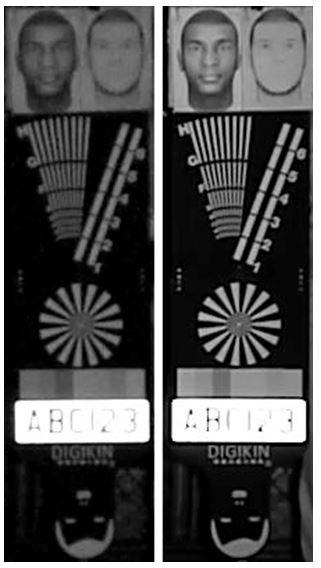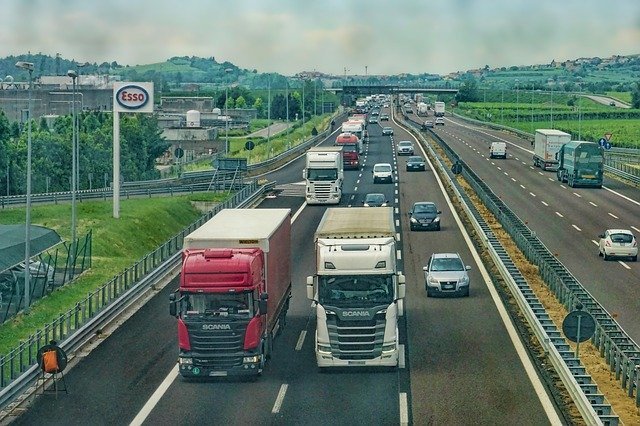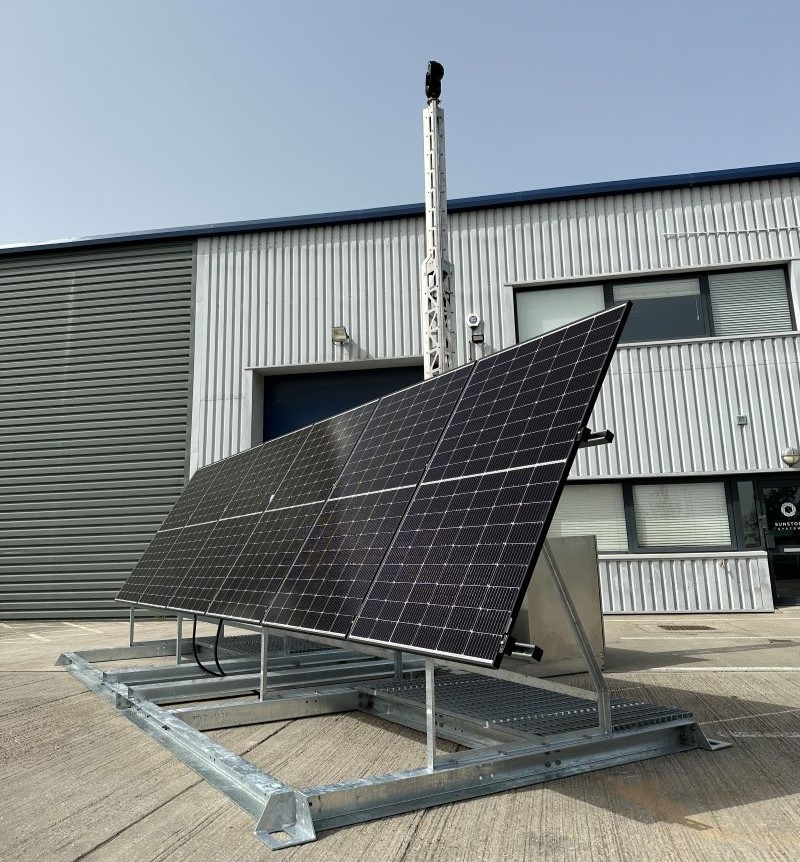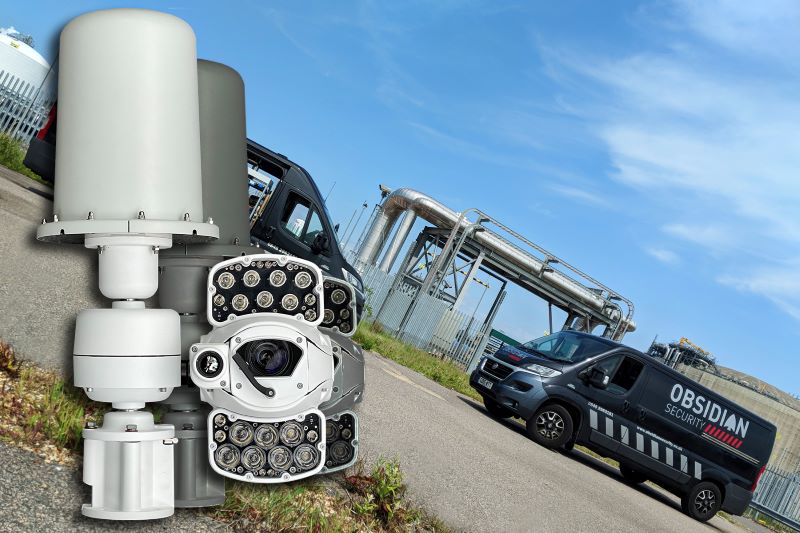The right CCTV camera settings make the difference between images that are ‘ho-hum’ or ‘wow’. Installers and owners who are happy with ‘ho-hum’ read no further.
People who are willing to make the effort for ‘wow’ can read in the next few minutes what can make a big difference to their CCTV clarity.
It’s fairly well known that you need enough pixels in your image to achieve the details you need. However, it still frightens me how many installers and security management professionals I meet who actually don’t understand this basic concept.
They genuinely and mistakenly think buying HD cameras and relying on CSI labs will be enough! No it won’t.
Without sufficient pixels in the face you want to identify, magic won’t make them appear. Let’s see some real world captures from an HD camera I tested.
The left-hand Digikin target is 550 pixels high. Zooming the lens out made the Digikin in the centre become only 285 pixels high (about half as many).
Guess what? There’s only half as much small detail can be resolved. It’s really that simple.
The right-hand image is the small one magnified so you can compare its limitations. Same camera, same day, same zoom lens but, importantly, no Photoshop fakery that we see from so many CCTV advertisers.
If you want to know how to design this properly, have a look at this earlier article “CCTV Guide – Setting your Objectives and Requirements”.
Ok, so you have enough ‘pixels on target’ for identification, but what if your target is moving? People often walk. Using one of the UK Home Office CCTV test faces we can see how sufficient detail can still get destroyed (see below right).

The factory default CCTV camera settings give us motion blur at walking speed which destroys the identification details that all those pixels were meant to give us. You need to set a sufficiently fast shutter to freeze the motion.
Almost no one ever sets this up properly. Be the one who does. Bear in mind that this will naturally reduce night-time sensitivity so make sure there is enough light.
Noise created by cameras struggling in low light can also destroy details that would be kept in good light. So don’t ever believe datasheets saying a camera is good down to 0.1 lux because your own proper testing is the only way to discover the truth.

The right-hand image has more light so the camera doesn’t need to boost the signal, which keeps noise much lower.
The brightness of these two images is similar. Nothing changed but the light provided. Clearly, noise reduces what detail you thought you would achieve. So you should limit AGC boost to, say, 24dB and compensate for the lower boost with better lighting.
You would be surprised at the visible differences between good quality lenses and how this can affect clarity.
The images below were taken with three examples of the same camera in the same room, each with a different varifocal lens from one famous, high quality manufacturer. The differences in sharpness are surprising. Can you imagine how much clarity could be lost using a cheap lens?
Any lens needs to be focused properly for good clarity. It never ceases to dismay me how many appear out of focus at night.
Incompetent installation and maintenance is to blame. The solution is easy but that needs to go in another article on another day.
Nonetheless, when many modern cameras have automatic focus set-up tools built into their software let’s think about maximizing clarity over as wide a distance as possible by taking an example.
Let’s say your camera looks along a corridor 50 metres in length. It is fitted with a 9mm lens with an F1.6 aperture on a 1/3-inch camera.
So, to maximize the number of things in focus do we carefully focus on the further object of interest 50m away? No. We should focus it only 4.65m from the camera! That’s called the hyperfocal distance.
By definition, everything further away than the hyperfocal distance is in focus, so pretty much all of this long corridor. In addition, objects as close as 4.25m will be in focus when depth-of-field is shallowest at F1.6 in low light.
It will be even wider when the iris closes in brighter light. To calculate the hyperfocal distance for any camera and lens you can try this online calculator or a smartphone app for out on site. Get the most wide-ranging clarity when focusing any lens. It’s straight physics.
Analogue video is still popular in spite of growing IP and SDI video. With so much Cat6 cabling in the world the use of baluns is still very widespread for carrying analogue video but can destroy clarity if passive baluns are used according to some manufacturer’s advice.
A quick-and-dirty workshop check with an analogue camera looking at a test card shows the out-of-the-camera clarity, above.
Then using passive baluns over Cat6 cable their manufacturer advises on the packaging that they are good for 400 metres. However, after 216 metres the high frequency content is far too weak (measuring the chroma burst on an oscilloscope) to meet ITU-R PAL video standards.
The loss of picture detail can be seen above where horizontal resolution drops from around 450TVL to 400TVL. How bad would this loss of clarity be over the full 400m they recommend? I dread to think, and so should you if you go above 100m with them.
If you’re using cheap, fake ‘Cat5’ that is really copper coated aluminium (CCA) then distances much more than 60m will see too much signal loss. Try it on your workshop bench. You’ll see.
Light levels at night can easily fool people too. We check with our light meter under the street lamp (see images on the right) and measure 12 lux but that is horizontal.
This value is much higher than the lux measured on the vertical human faces which we’re interested in seeing clearly. Measure this instead, facing towards the camera location, for a correct design. Here it is only 3 lux.
Not only that, but make sure the lamp is not behind our target. Otherwise all that light simply creates a silhouette with no facial details because now we measure only 0.3 lux on the target towards the camera.
If you can’t move the light, try and counteract it by adding frontal lighting from the camera’s perspective. In the final image, below, the very bright backlighting in the scene is effectively counteracted by sufficient infrared from a lamp adjacent to the camera.
I hope these ideas have been useful. You might not think that each of these makes much of a difference to the image clarity that you achieve, but if you employ several or all of them the results will be multiplied together.
That’s how to get from ‘ho-hum’ to ‘wow’. The improvement in clarity could be very worthwhile.





















spreadys Thanks Dave! There’s a whole new article in that barrel of wasps 😉
Great Article Simon,
thank you.
Ha, ha, the old “I was only taking a light meter reading officer” retort, to the challenge of loitering outside someone’s house in the dead of night; what’s a poor CCTV Consultant to do these days, just to get the job done! A very interesting article as always Simon, and lot’s of useful pointers in there. Just to quickly pick up on a couple of the issues that you raised. You started off by saying “People who are willing to make the effort for ‘wow'”, which kind of usefully underscores one of the biggest problems we have in the industry.… Read more »
Simon, I wonder just how many so called CCTV systems designers and installers even have a faintest clue about what you are talking about, and probably even fewer people who purchase these systems.
Of course they can install really cheap faux CCTV with their plug and play products. If only being burdened with knowledge was not such a disadvantage in this industry.
Tony Stoynov Thanks for your kind words, Tony.
GuardHome Yes, I think you’re absolutely right about that. It’s a great shame. Still, let’s continue to howl at the moon, shall we? 😉
Doktor Jon Thanks for taking so much time to reply, Jon. Greatly appreciated, and I agree with every word you say. You hit the nails on their heads, as ever. The Golden Zone makes perfect sense and, without consciously giving it that label in my mind, I pretty much do the same in most situations for the practical reasons you explained. Oh, and finally, I can completely sympathize about being caught walking the streets at night with a light meter. Essential to convince the passing police that I’m just a nerdy nutter!
SimonLambertConsultant Doktor Jon Thanks Simon; the ‘Golden Zones’ concept was somewhat less than surprisingly derived from my earlier ruminations on ‘Golden Angles’, which seemed at the time to be the easiest way to explain to some peeps that practically every aspect of camera positioning has some practical consequences, whether good or bad. For anyone that’s interested in a visual, I’ve got a slightly ropey ‘Golden Zone’ page online, which might make a bit more sense rather than me waffling on! – http://www.doktorjon.co.uk/cameraangles2.html Not entirely sure that most police officers would appreciate the irony of taking light meter readings in the dark, but a… Read more »
To get the best
pictures from CCTV, all you need is to purchase a perfect camera with quality
lenses. The better your lens will be, the better pixels you’ll get while
clicking. Set your camera settings in such a way that you can get pictures not
only in daytime, but night times as well. When it comes to cleaning the CCTV
lenses and filters with either a blower or soft-bristled brush. One can even go
for a cleaning with a silk cloth.
Actually in most cases the more you spent on the camera the better it is. So the pixels does not matter so much. I mean if it has at least 5 MegaPx then it is already quite fine. The next thing – is the quality of the lenses, the zooming – if it loosing the quality while zooming. Most cameras nowdays can be controlled remotely like – zooming/ tilting/ sound in both ways – microphone and speaker. Axis are my preferable best. This is an online camera live streaming example – http://www.viralcameras.com/65/posts/5-uncategorized/8-uncategorized/24410-united-states-online-camera-lansdale-watch-cam-.htmlHowever most of the things are dependent on the… Read more »
what is the effect of increasing the horizontal angular view of a cctv camera
rol0980
rol0980 If you increase the horizontal angle-of-view the vertical angle increases by the same proportion. This means that the number of ‘pixels on target’ must reduce because the camera’s sensor is now accommodating an expanded scene. As the angle increases, at some point you may find you have too few pixels on target to achieve your image’s purpose. Then it is time to narrow the view enough to meet the CCTV owner’s purpose.
does it also decrease the distance of the coverage area?
My family just moved into a new house and I want to get a CCTV system. Thanks for the advice about how light can help provide better images to make people more easily identifiable. I think it would be easiest to make sure there is a lot of light, and to get a reputable company to install your system. http://www.barwonsecurity.com.au/cctv
rol0980 If the angle-of-view increases, the distance at which you will achieve your desired pixels on target will reduce. For instance, if you can achieve 250 px/m (pixels per metre) at a distance of 10m across a 20m wide scene, then widening to a 40m wide scene will reduce the 250 px/m distance down to only 5m.
We understand that information is critical to success, which is why we are singularly focused on the development of <a href=”http://goo.gl/jmIa9H”> video surveillance and security solutions </a> that provide you the information necessary to make real-time, business-enabling decisions.</br>From the recently introduced Video expert video management platform to our industry-leading selection of<a href=”http://goo.gl/jmIa9H”> IP cameras and accessories</a>, We are committed to designing and delivering a broad range of high-quality,<a href=”http://goo.gl/jmIa9H”> IP video security products and systems</a> complemented with an unparalleled level of customer support and services.</br></br><a href=”http://goo.gl/jmIa9H”>.. read more</a>
We understand that information is critical to success, which is why we are singularly focused on the development of <a href=”http://goo.gl/jmIa9H”> video surveillance and security solutions </a> that provide you the information necessary to make real-time, business-enabling decisions.</br>From the recently introduced Video expert video management platform to our industry-leading selection of<a href=”http://goo.gl/jmIa9H”> IP cameras and accessories</a>, We are committed to designing and delivering a broad range of high-quality,<a href=”http://goo.gl/jmIa9H”> IP video security products and systems</a> complemented with an unparalleled level of customer support and services.</br></br><a href=”http://goo.gl/jmIa9H”>.. read more</a>
I have seen this technology prevalent in the retail sector more than anywhere else. Retail surveillance systems are in huge demand these days as they are helping retailers tackle many challenges.
http://gizmosupport.com/tackling-retail-challenges-with-modern-retail-surveillance-systems/
Hi guys I am using an ip camera to take quality image with low light. the quality of the video live is good., but when we take snapshot out of it., could get some mosaic on the image. any one suggest how to overcome this mosaic or to enhance the image. image quality 12 MP.
My cctv DVR has EMI issue. I know it’s the DVR unit because I isolated the problem by using a power supply with an EMI filter for both the camera and DRV unit, and only used one camera connected to a 10 foot RG6 coaxial cable. Can the DVR be fixed, or do I need to buy a new unit?
how to get the best clarity of HD cameras with 3MP and above?
I was wondering anyone can help to solve this problem for me. i have instalaled 6 cameras for each i have ran individual cat 5 cable and max distance is 40 meter. and i have a poor picture with lines verticaly and all direction on my monitor.
This is a very informative article. Would you recommend connecting the CCTV camera to an inverter?
I’m planning to get this http://www.ict-power.com/product/dc-ac-pure-sine-wave-power-inverters/
The problem I’m having is that my camera produces files on the SD card that are named *.264. And there are two different resolution streams, a 640×352 and a 1280×720. Each has its own independent settings. If I tell it to store the hi-res stream on the SD card, it won’t play or convert with any utility I’ve tried, producing a bunch of errors with ffmpeg. The lo-res stream works fine. I’m wondering if there’s some set of video parameters I can choose that would produce a viewable 1280×720 file. The options are: Video Format (50hz or 60hz), Bit Rate,… Read more »
Hi,
We are a UK-India company. We are looking for 4 pcs 5 megapixel camera for security purpose and 1 pcs 8 megapixel HD camera compatible to read the workstation screens. Please guide me the best brand and the best config in including one month backup DVR/NVR with comfortable budget.
Thanks for this article
Hi my name is Amaar and I need to set the playback on H.265X to playback more than a week. How do I set it .Please advise? Thanking you in advance.